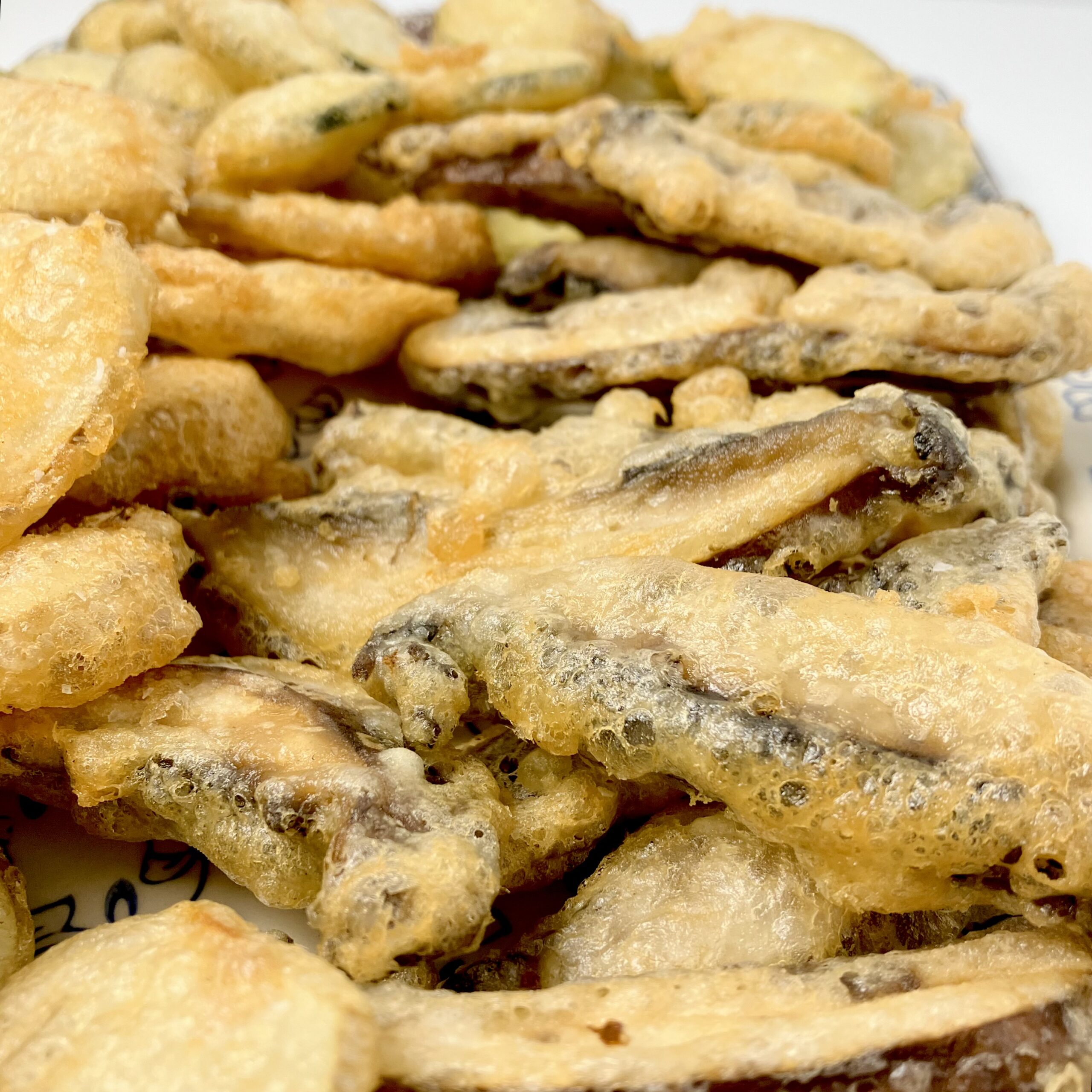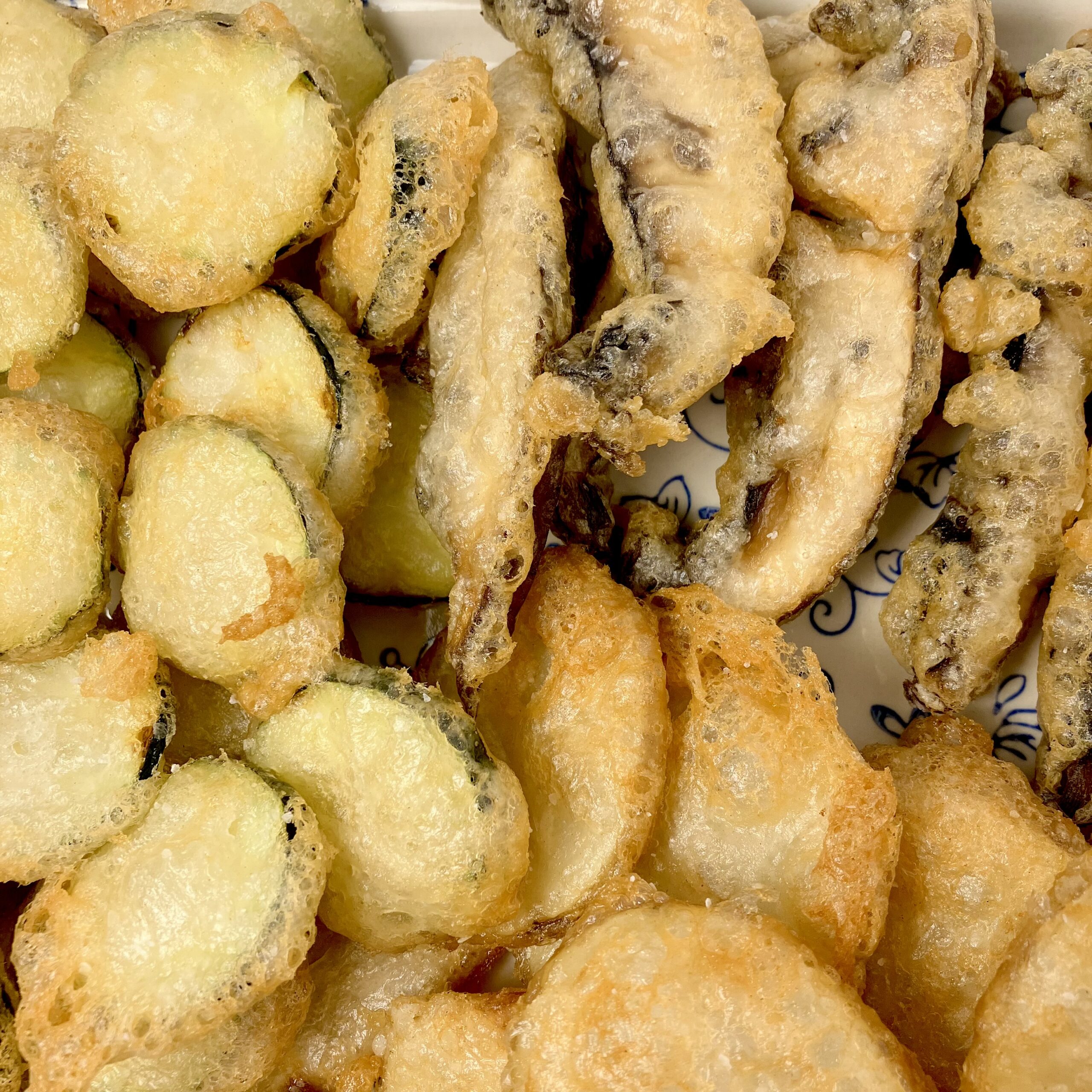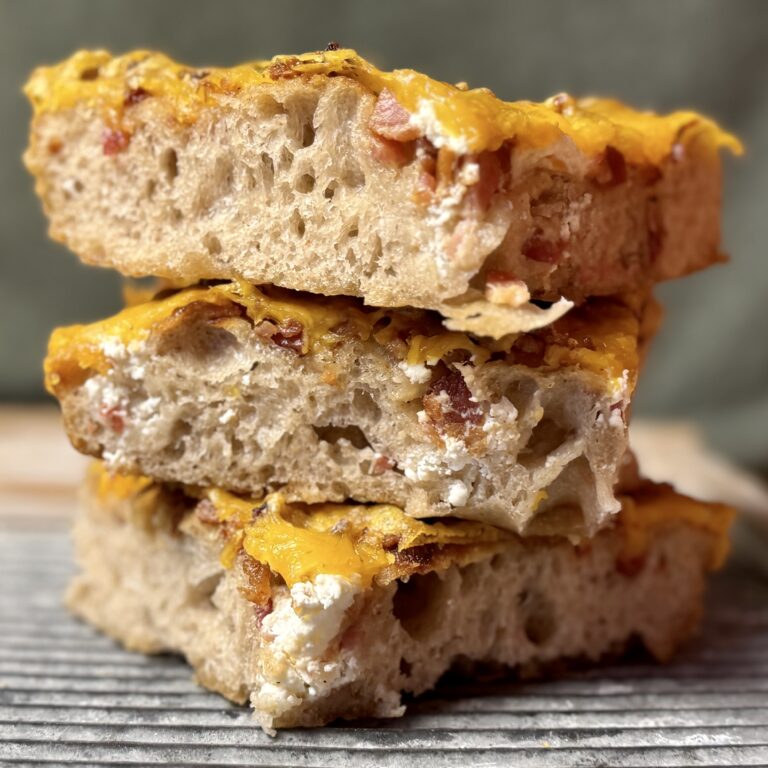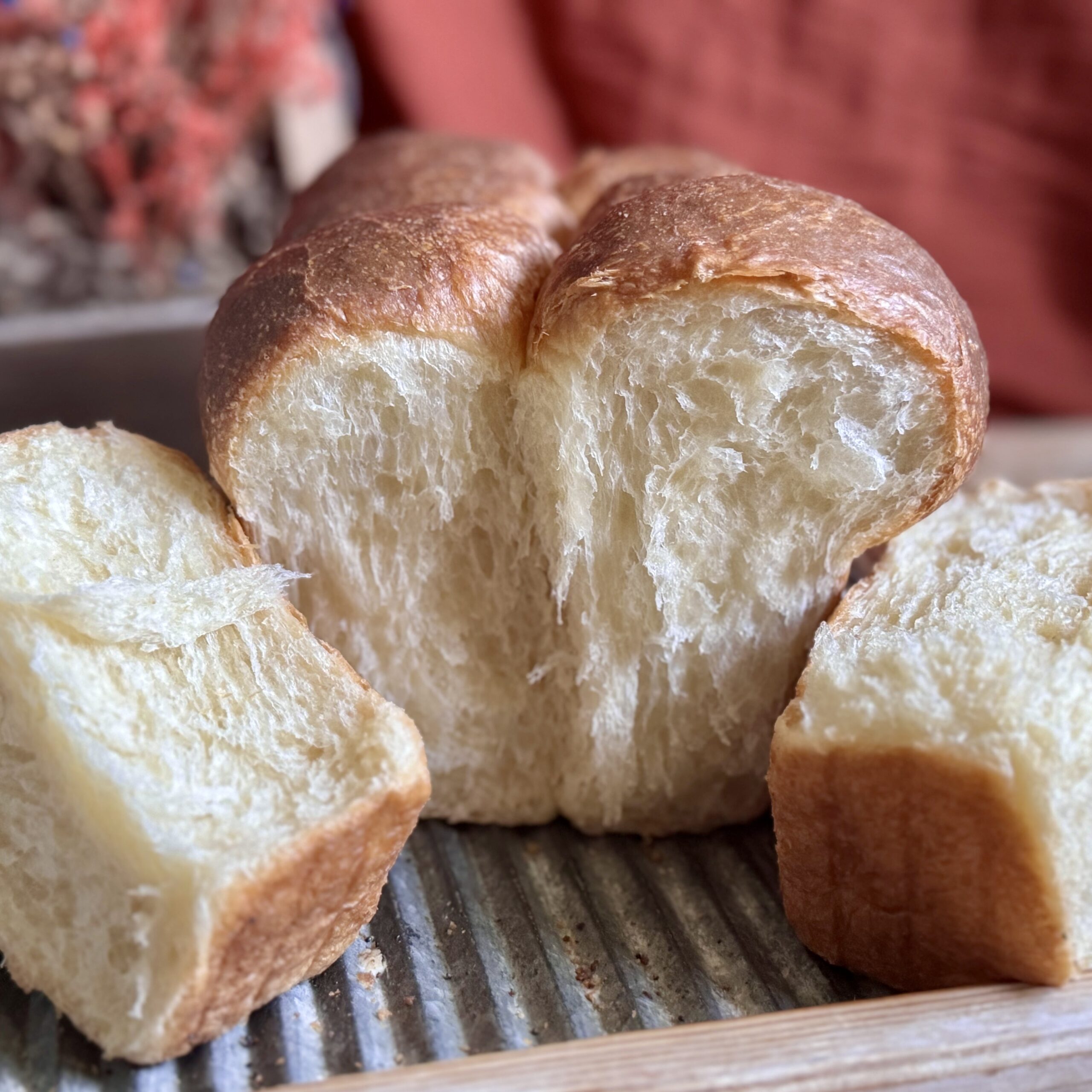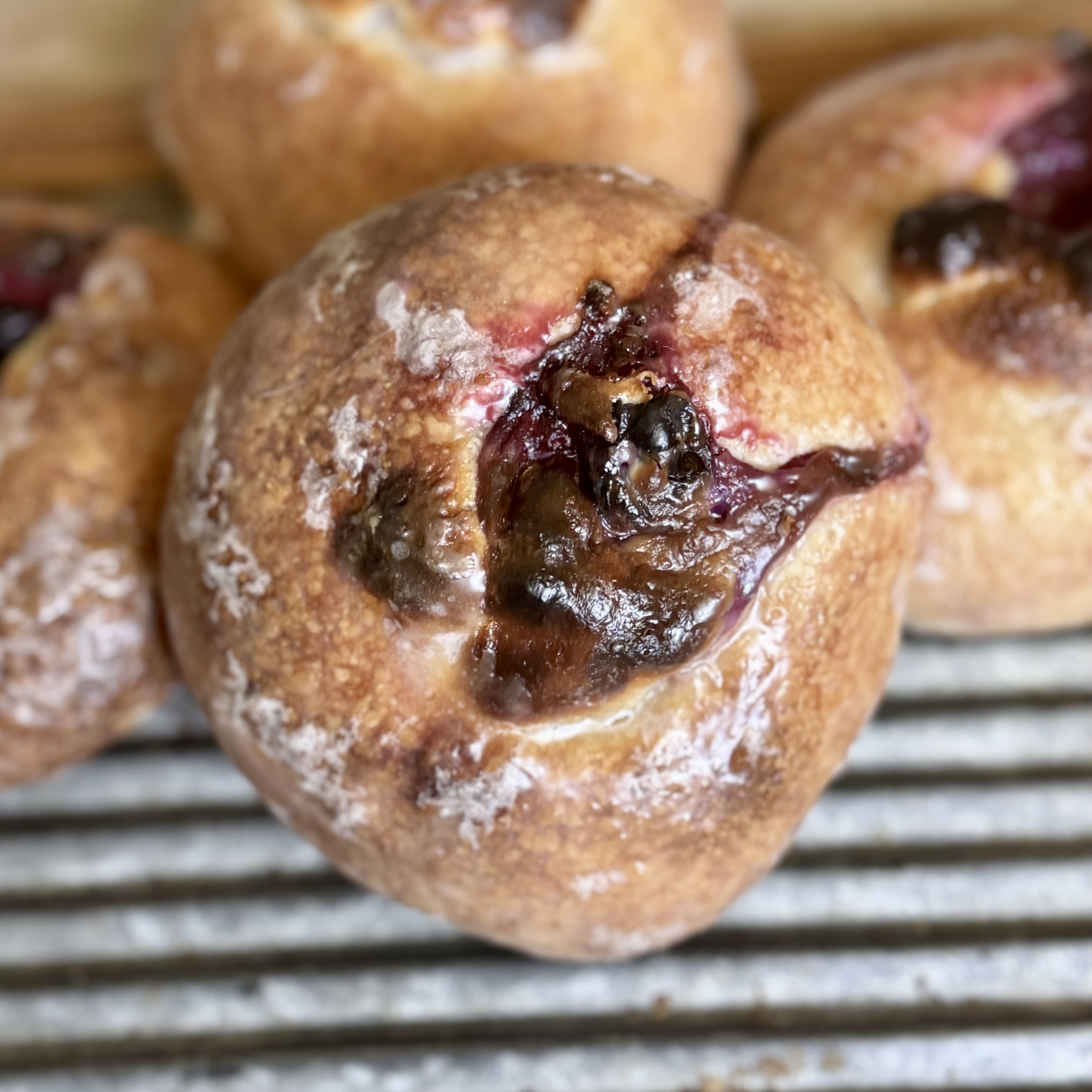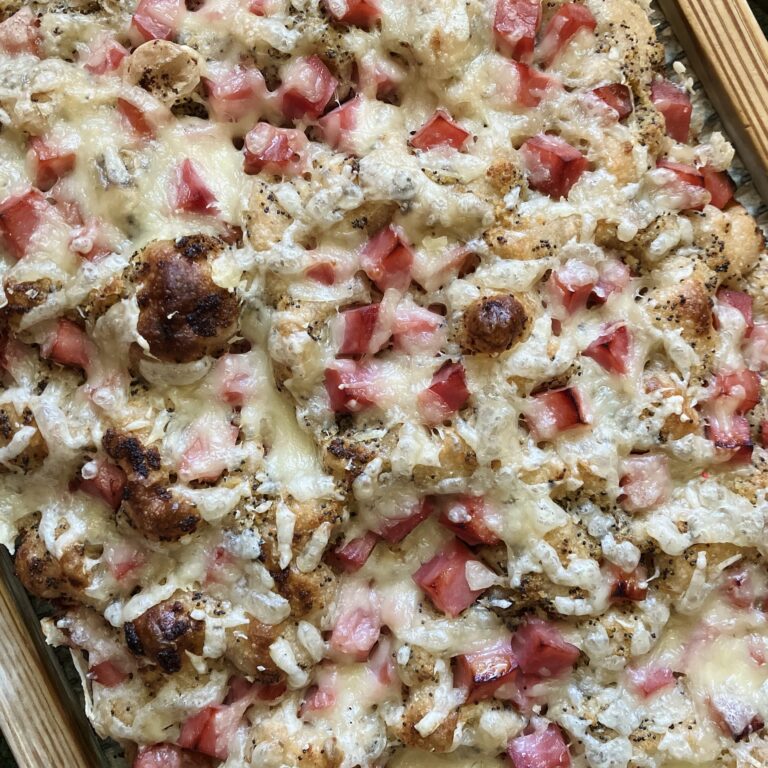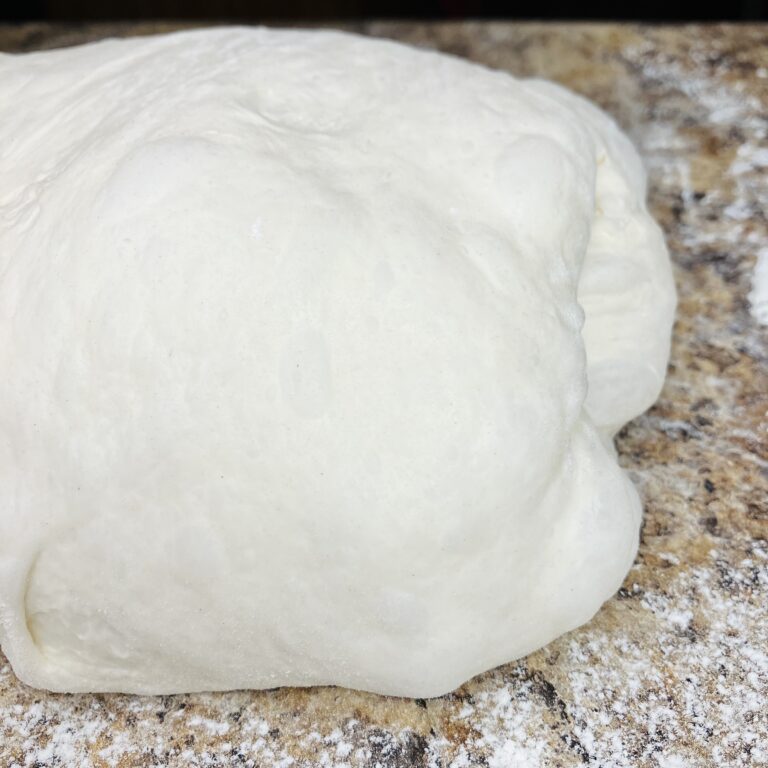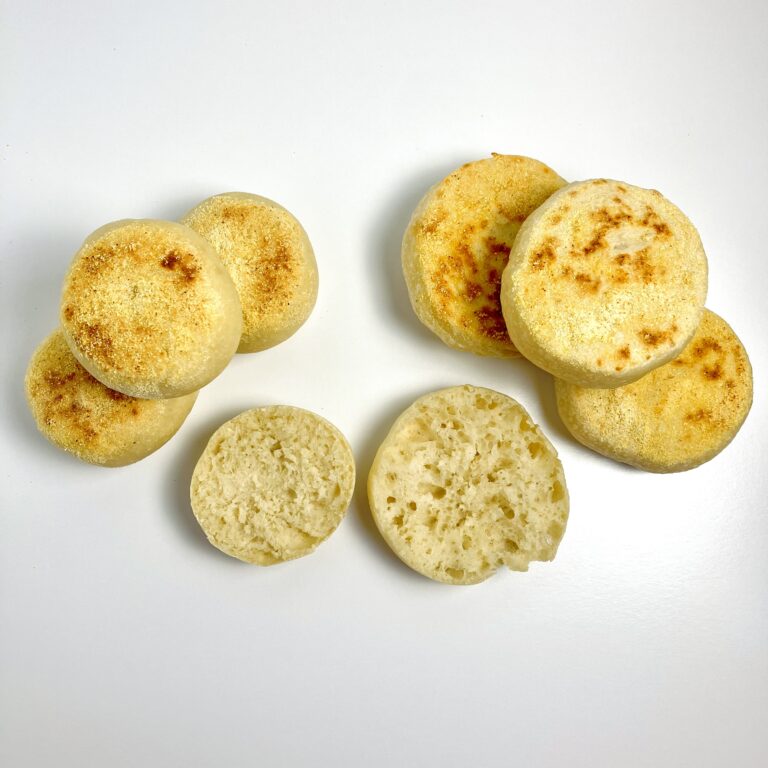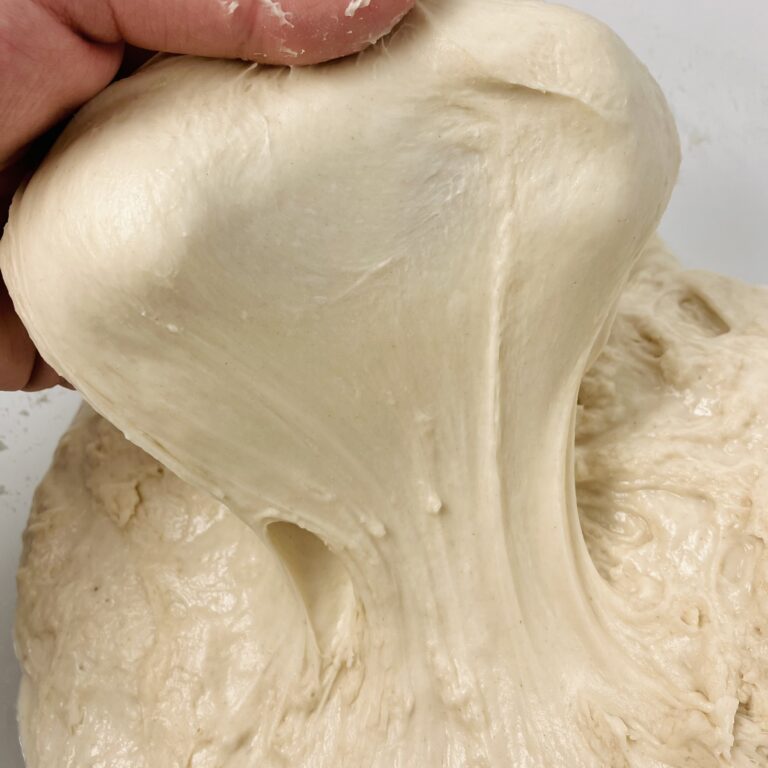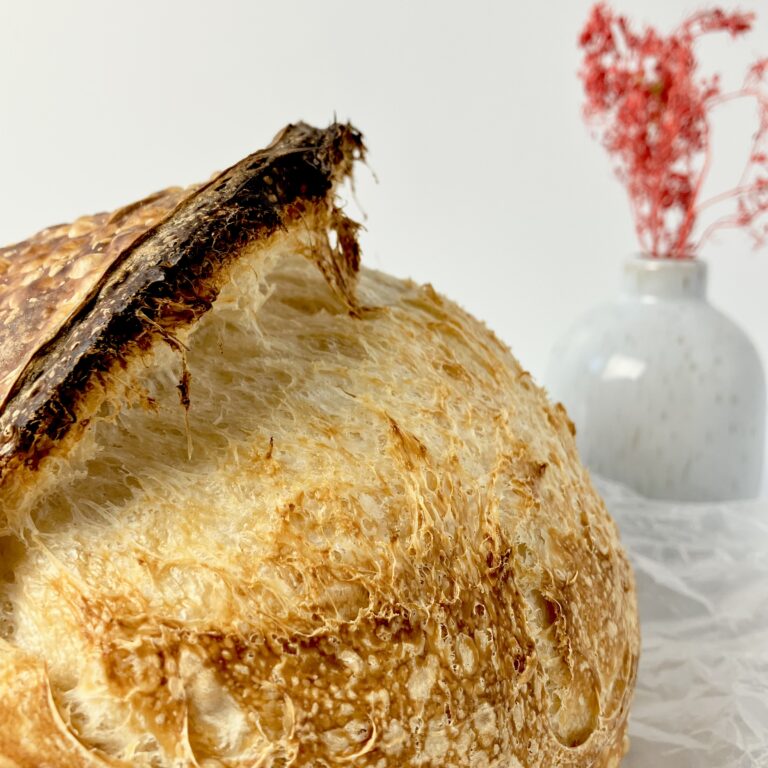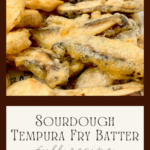About This Recipe
What is tempura fry batter?
Tempura fry batter is a light and airy batter used in Japanese cuisine to coat vegetables, seafood, and other ingredients before deep frying. The batter is typically very thin, resulting in a more delicate coating. Tempura fry batter can be just flour and cold water, though sometimes an egg or other ingredients, such as starch, are added.
What I love about this recipe:
This tempura fry batter, made with sourdough starter and carbonated water, is so light and beautifully crisp, it just about tops any other fry batter I have made with my discard. Plus, the elimination of unfermented flour means it does not make my stomach upset after indulging. Choose a healthy frying oil, and you will have a new guilt-free pleasure.
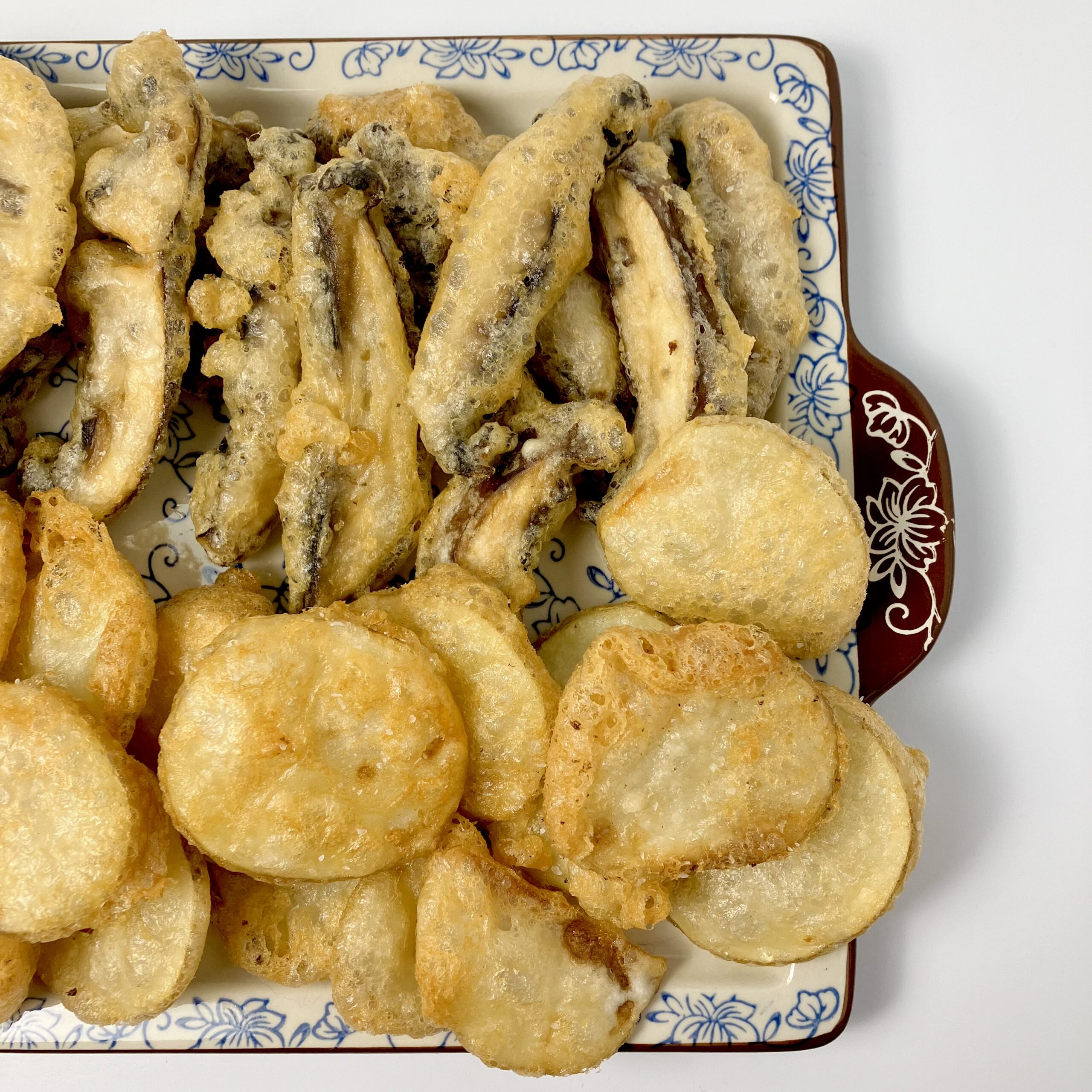
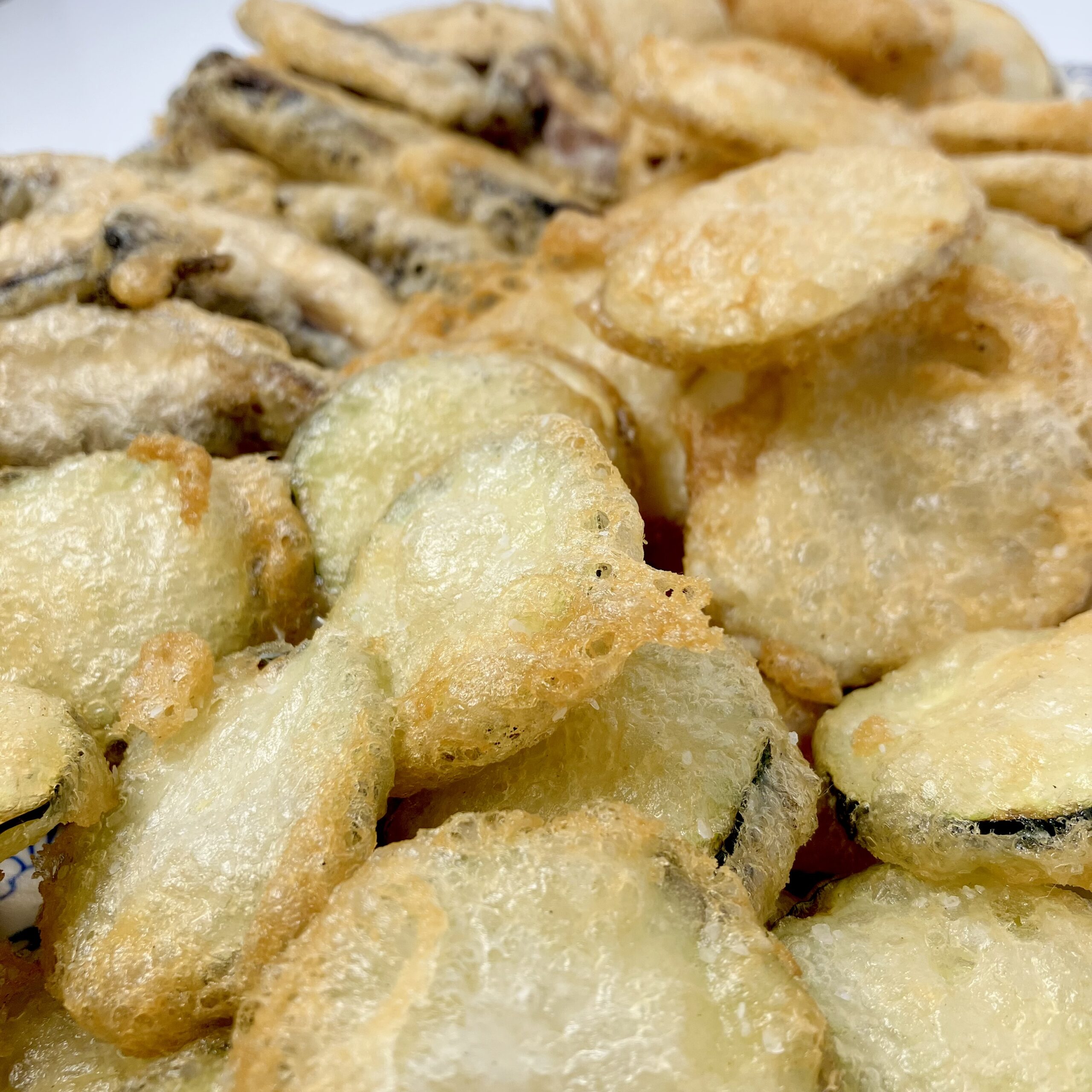
Why this recipe works
Coating in Starch
Coating in starch serves two purposes. First, it helps pull any additional moisture from the vegetable or meat being fried. By doing this, the starch also helps the batter stick much more effectively. Starch is preferred here over flour, in order to keep the gluten content low, which aids in a crispier end result.
Cold Ingredients and Limited Mixing
Cold ingredients are essential to keeping the batter light and limiting gluten formation during mixing. Because this recipe is made with sourdough discard, there is already more gluten than a tempura fry batter prefers. Too much gluten and the end result becomes chewy and oily. Despite this roadblock, a crispy end result is still achievable with sourdough discard! By keeping the ingredients cold and limiting the amount of mixing that occurs, gluten formation is restricted as much as possible.
Bubbly Water
Carbonated water adds to the lightness and crispiness of this batter. The gases in the water expand when they are fried, leading to a better overall end result and lending a hand-up to the sourdough discard.
Hot oil
When cold ingredients are added to the oil, the temperature drops drastically. This is why it is important to heat the oil above the desired frying temperature. The goal is to fry at 350 F, so an oil temperature of 375 F (even up to 400 F) to begin with is incredibly helpful. Ideally, the maximum amount of time the vegetable or meat is in the oil is three minutes. It is important that the batter does not absorb too much oil during frying, or else is will become soggy and greasy, rather than perfectly crisp. An oil that is not at the right temperature can lead to this undesirable result.
A fine seasoning
It is important to use a fine, rather than coarse, seasoning at the end. This will stick to the coating much better, resulting in less waste and better flavor.
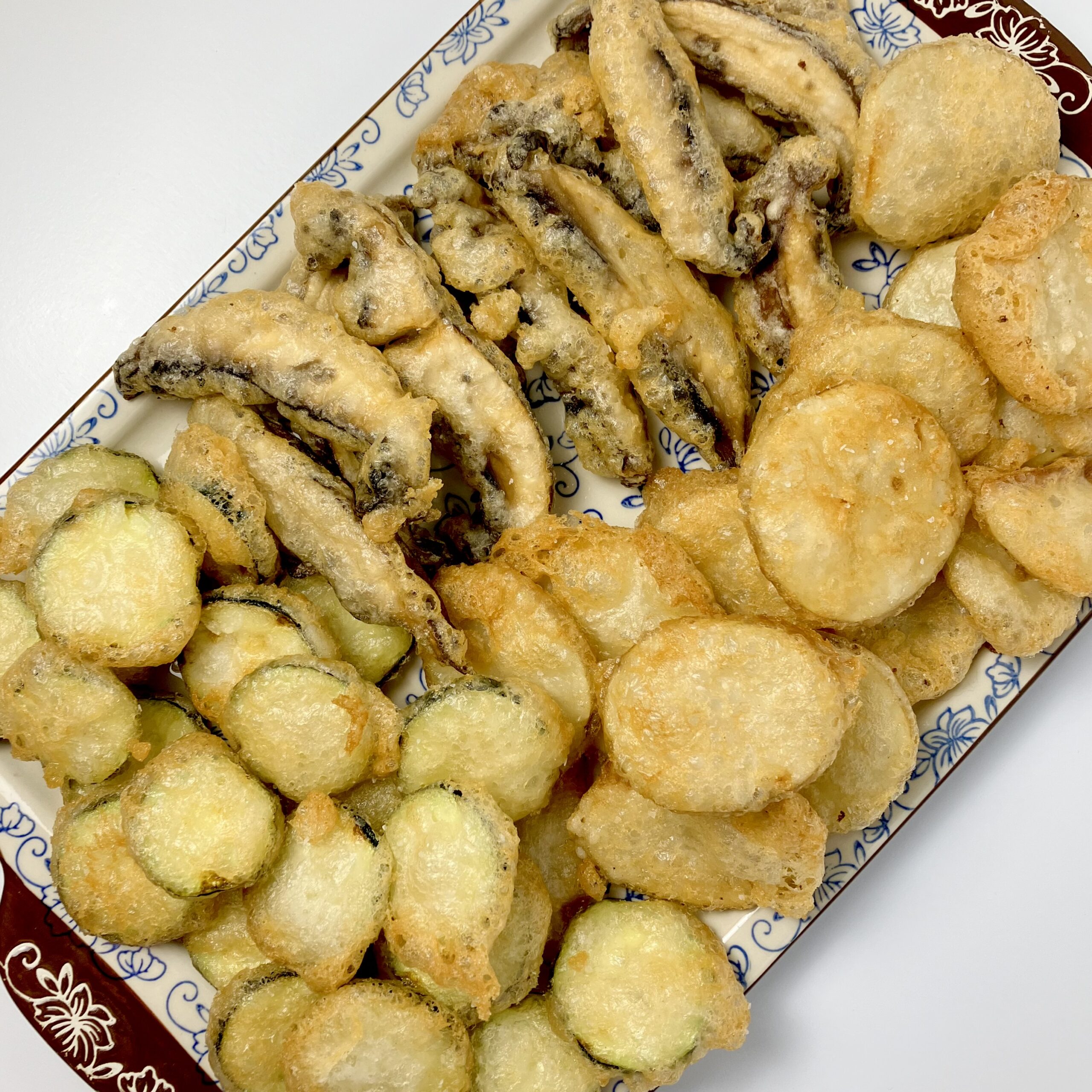
FAQs
Does the activity of my starter matter in this recipe?
For this recipe, the activity of your starter does not matter. Active or inactive discard will work great. In fact, for this recipe, the proportions do not have to be exact. The goal is to obtain a thin, and not too sticky, batter for coating. If your discard is old and thin, simply add a bit less water. If your discard is thick and relatively sticky, add a little more water. Go for the consistency in my YouTube video if you need a visual.
Sometimes tempura batter includes egg. Can I do that in this recipe?
Absolutely! If you prefer egg in your tempura fry batter, you are more than welcome to add it. When doing a side-by-side comparison, I found the batter without the egg was more crispy. I also thought it was important to exclude egg in order to include those who cannot have eggs, since egg did not seem to bring incredible benefits to the batter. You can simply add the egg without making any other changes to the batter.
What if I don't have carbonated water? Can I just use plain water?
You can! As mentioned above, the gases from the carbonated water expand in the hot oil, creating a lighter, crispier batter. To achieve desirable results without carbonated water, use ice cold water instead. Another alternative, if you keep alcohol in the house, is to use cold beer.
Do I have to use starch?
No. Make sure whatever you are frying is thoroughly dry and skip the starch if necessary.
Tempura Fry Batter
Recipe by Caitlin VincentCourse: Lunch, SupperCuisine: JapaneseDifficulty: Beginner5
minutes1-3
minutes1 1/2 cups
fry batterTempura fry batter is a light and airy batter used in Japanese cuisine to coat vegetables, seafood, and other ingredients before deep frying. This tempura fry batter, made with sourdough starter and carbonated water, is so light and beautifully crisp, it just about tops any other fry batter I have made with my discard.
Ingredients
- For coating
Potato (or corn) starch
- For the batter
1 cup sourdough discard (225 g, preferably cold)
½ cup carbonated water (120 g, straight from the fridge)
Directions
Prepare the oil. Heat approximately two inches of oil in a cast iron skillet or Dutch oven to 375 F. The oil needs to be hotter than the desired frying temperature, as the temperature will drop rapidly when cold ingredients are added.
Prepare the vegetables and/or meat. Chop vegetables and/or meat to desired size for frying. Coat the vegetables lightly in starch. This will help the batter stick much better.
Make the batter. In a small bowl, combine the sourdough discard and carbonated water. Whisk until just combined. NOTE: DO NOT overwork the gluten by overmixing, which can affect the final texture/crispiness.
Dip and fry. Dip the prepared vegetables and/or meat into the batter and immediately drop into the frying oil. It is best to dip and drop each vegetable slice or piece of meat individually, as it is essential the pieces do not stick together. Maintain an oil temperature of about 350 F. Flip each piece halfway through frying. Fry until lightly golden and crispy, 1-3 minutes (depending on what is being fried). NOTE: Since starch is included, the batter may not deeply brown. Pull the vegetables and/or meat when they are finished cooking.
Drain and season. Transfer the fried vegetables/meat to a wire rack to drain. Season to preference. TIP: Use fine, not coarse, seasoning, as it will stick much better.
Enjoy!
How to store: I highly recommend eating anything made with tempura fry batter fresh. It will never be as good reheated as it is fresh. If you must store, cool completely before sealing in a ziploc bag and placing in the refrigerator for three to five days.
To reheat: From the refrigerator, air fry at 400 F until warmed through and crispy, three to five minutes.
Watch the Video
Notes
- Prepare everything before making the batter. Use the batter immediately after mixing. The carbonation bubbles from the water are important to getting the crispiest tempura.
- Keep the batter ingredients cold and do not overmix. Use sourdough discard and carbonated water from the fridge. This will help prevent the overdevelopment of gluten and give a crispier tempura.
- Some tempura batters include egg. When testing this side-by-side, I did not find the egg necessary. In fact, the batter without the egg was crispier. If you choose, you can add one egg to the batter (no need to adjust the other ingredients).
Join the email list
Join the email list to be notified when a new recipe or blog post comes out. No spam, just sourdough. Unsubscribe at any time.

